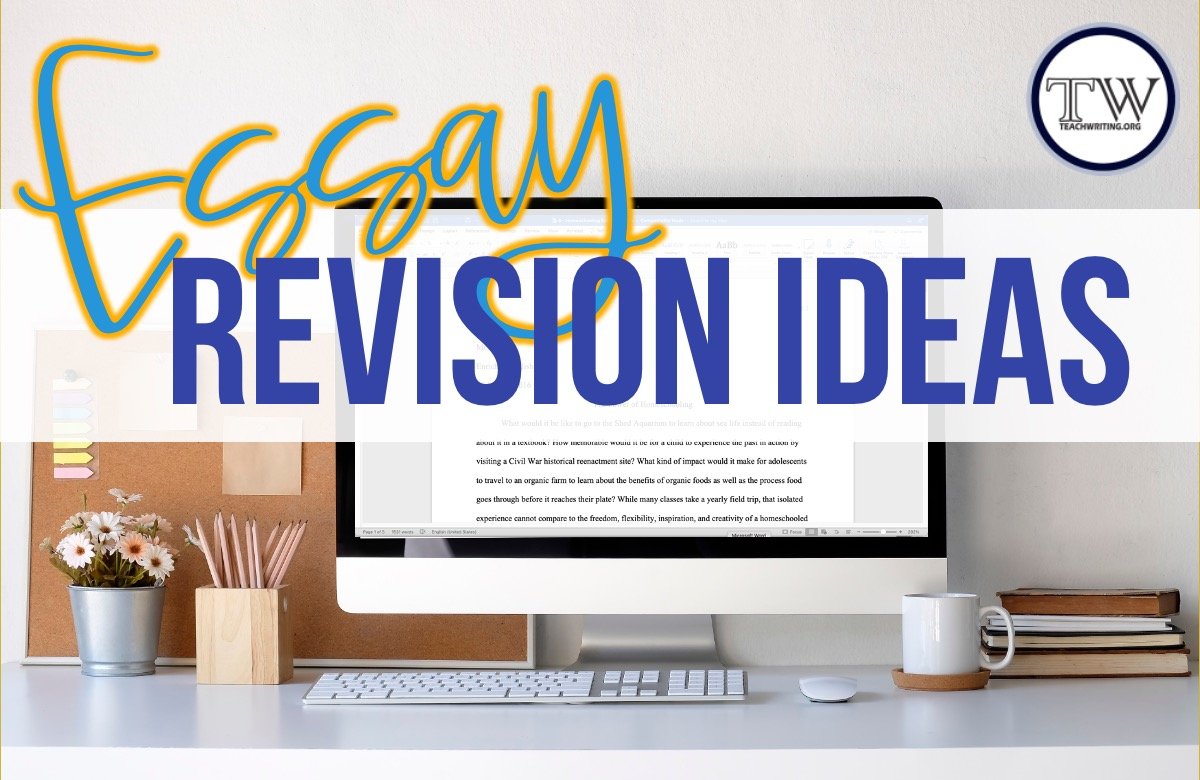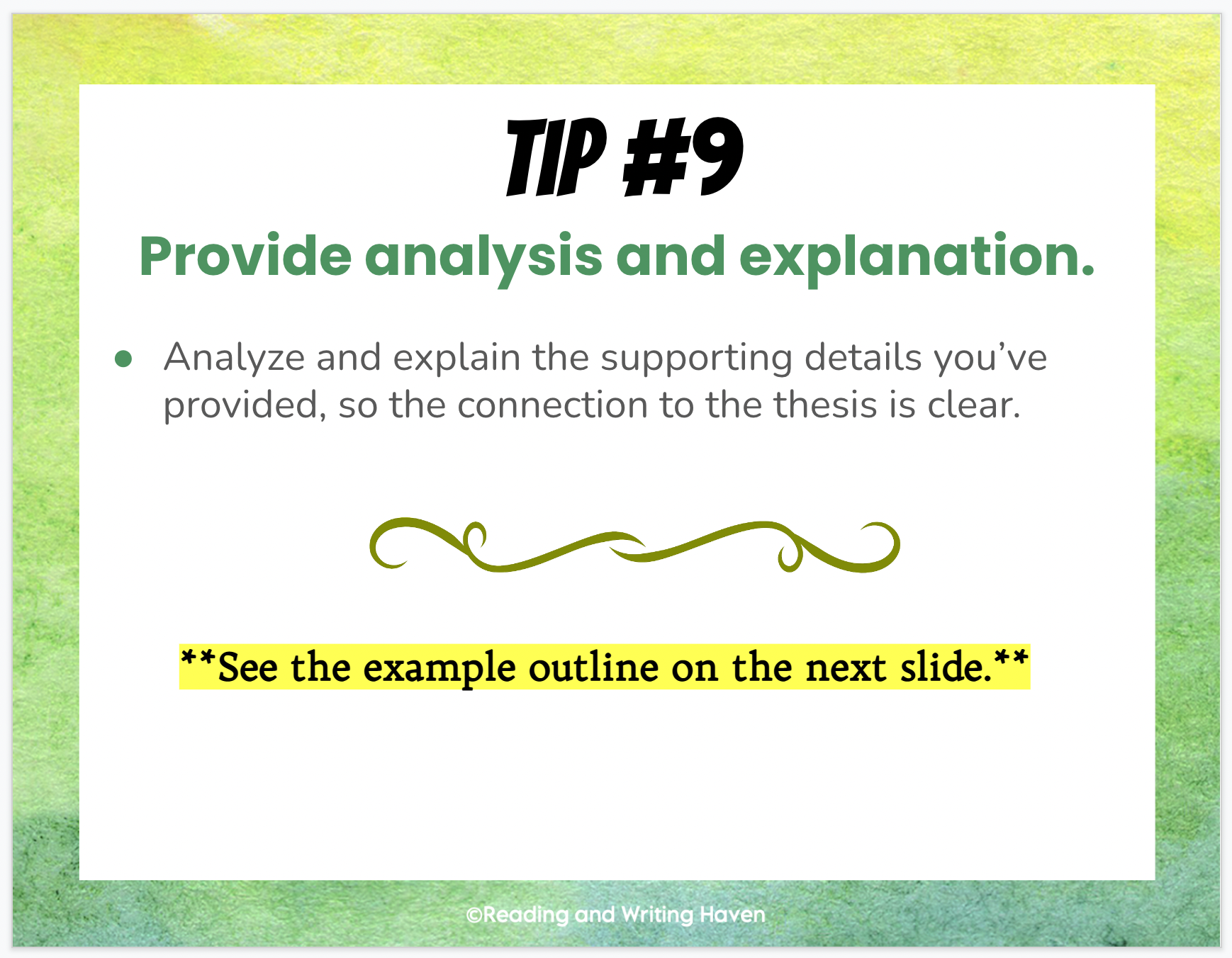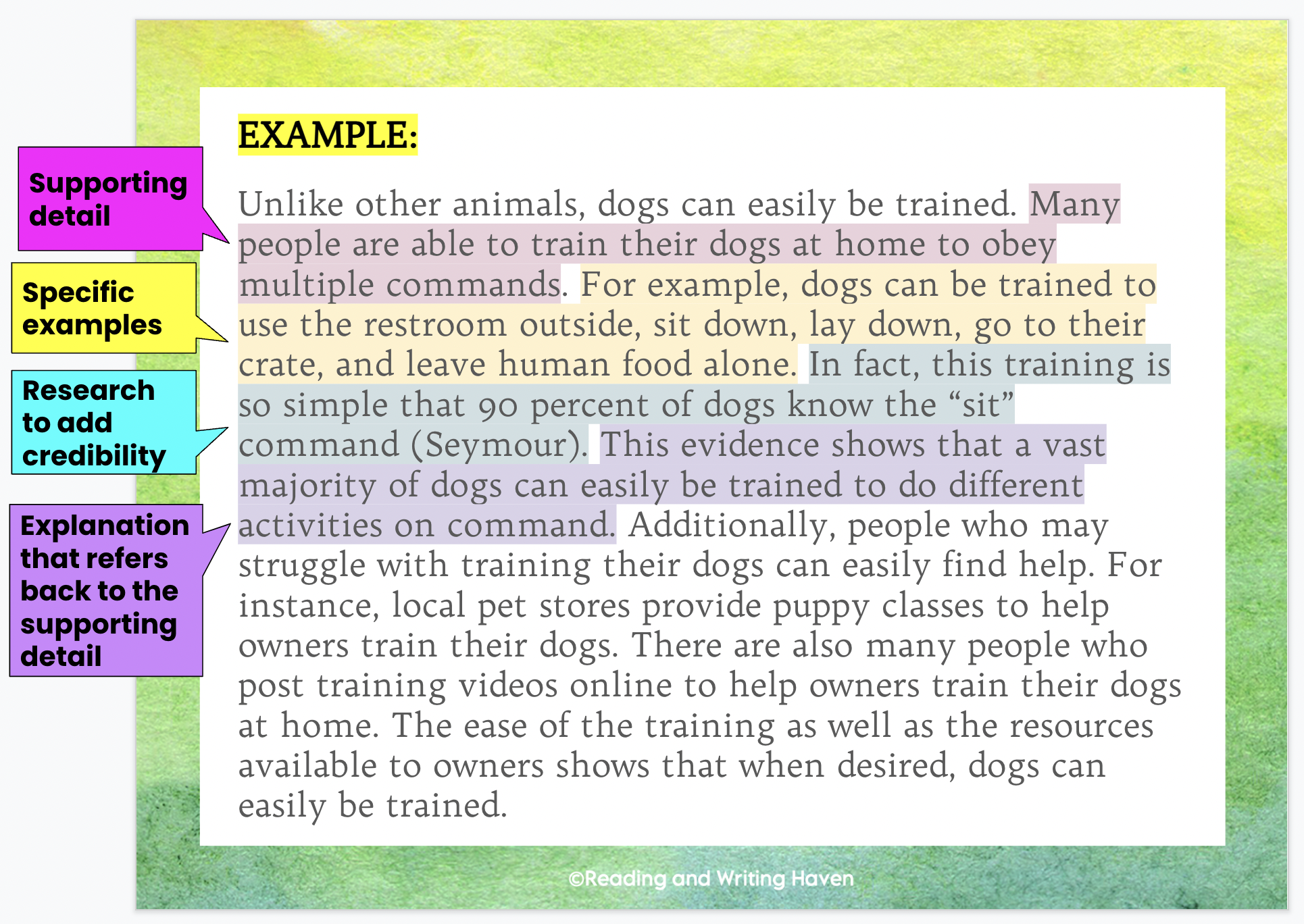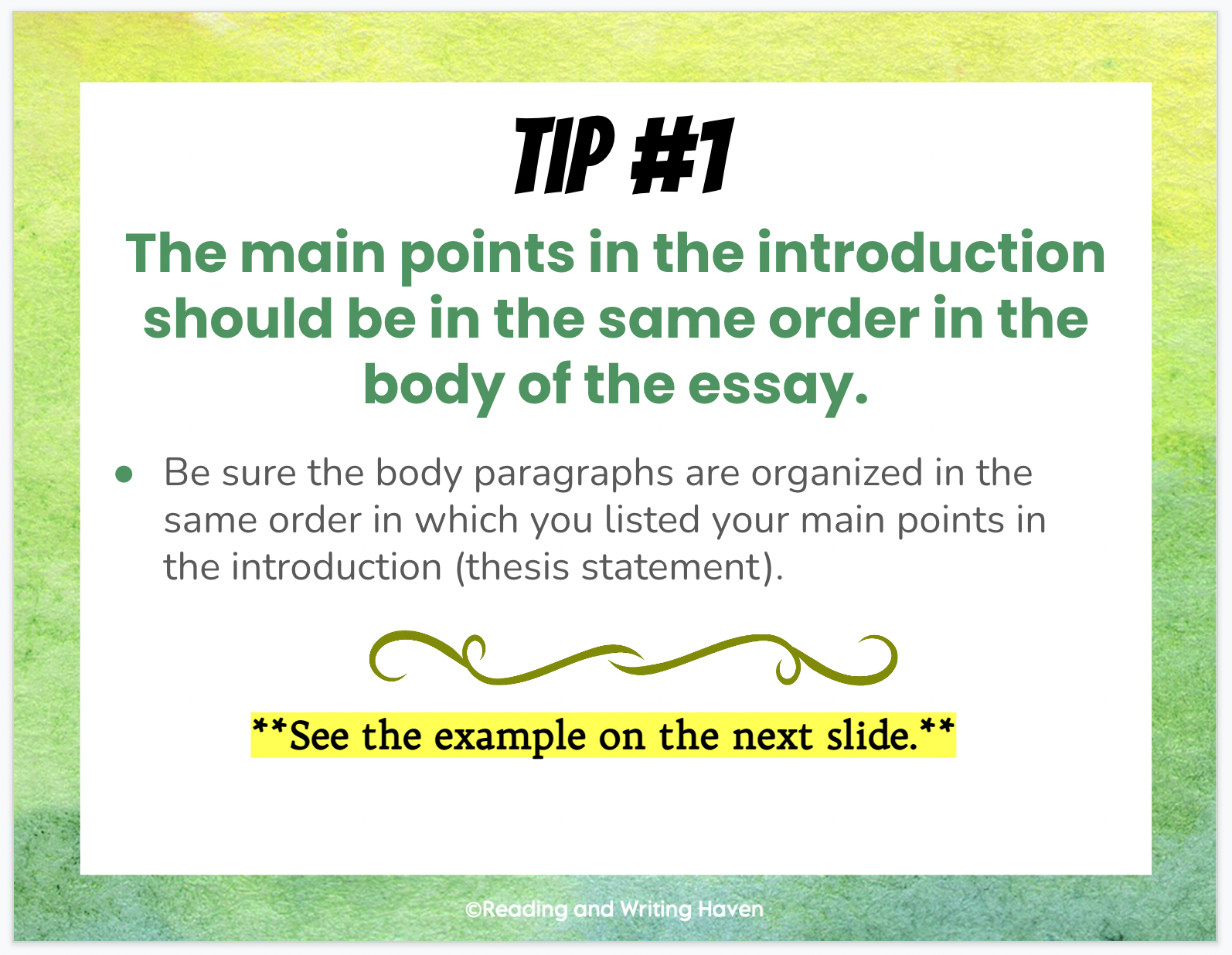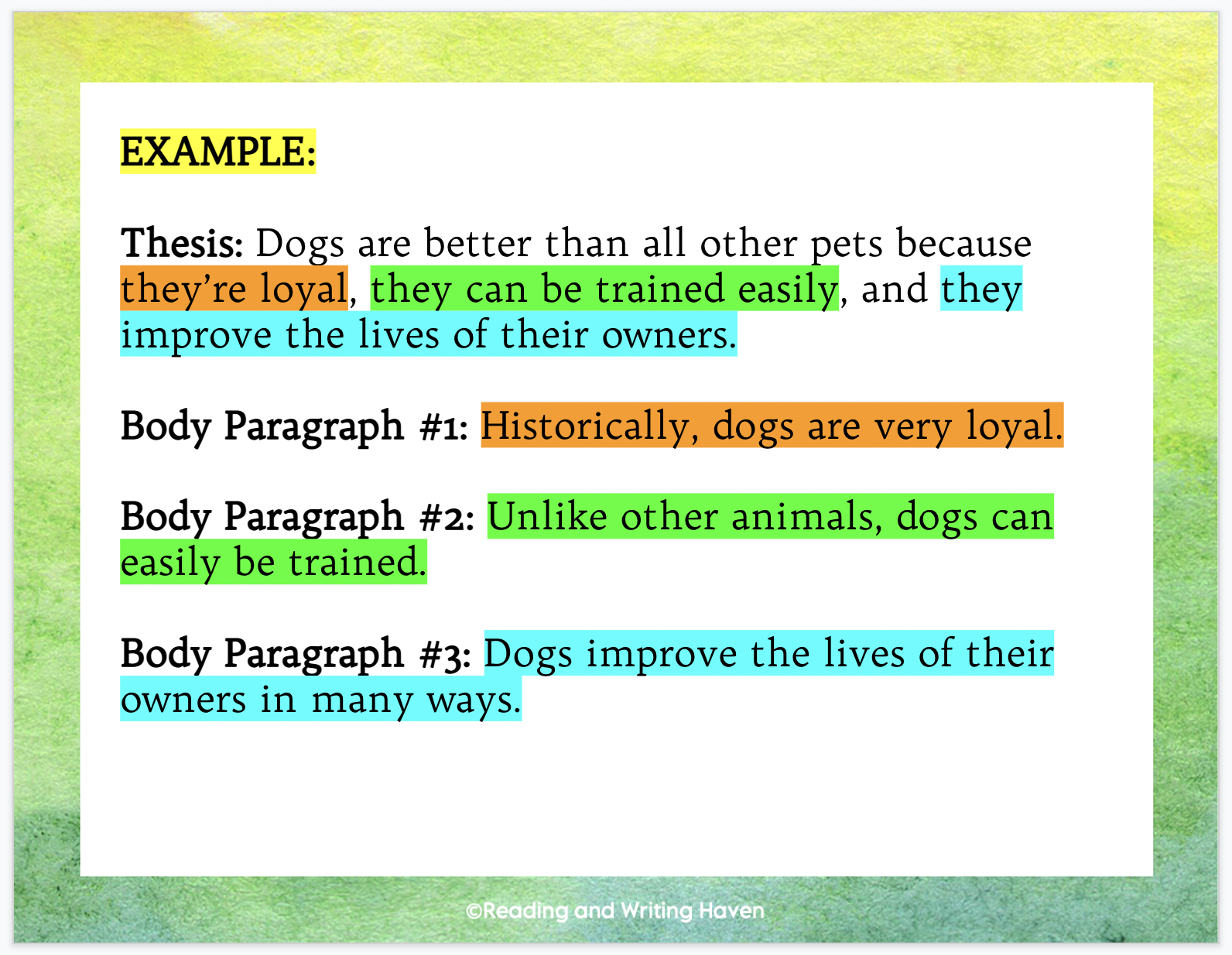Essay Revision: Ways to Encourage Students to Revise their Writing
“Okay, class! Today, we are going to revise the rough drafts we completed last week. This means that we get to strengthen our ideas and maybe even rearrange them if it would help our overall piece.”
“What?!” moaned the middle school students.
“Is she serious?” whispered Sarah to her friend. “We already wrote that essay! I have nothing to fix,” she announced.
We must teach students the recursive nature of the writing process.
〰️
We must teach students the recursive nature of the writing process. 〰️
Ever feel like getting students to revise their writing is more painful than having teeth pulled? Students often miss the value of essay revision. Maybe because it’s work. Maybe because they haven’t seen their growth during a revision process.
While I’ve had many positive experiences teaching students to revise their writing, I want to share one of my favorite strategies in this post.
It’s simple, really! In order for students to see the value of revising their writing, we need to give them ownership, choice, and feedback. And, we can do this through a tool I call “revising points.” We can teach students to meaningfully revise their writing with this simple, flexible strategy.
Pssst….it makes teacher feedback more efficient, too!
WHAT ARE REVISING POINTS?
Begin by choosing the reminders you want to highlight for students. I do this by considering the feedback I give most often when reading through rough drafts or conferencing with students. The goal when selecting revising points is to reduce the number of times you have to say the same thing…again…and again…and again.
I build my points around common topics. Usually, these are the traits of writing, which mirror the standards and my rubrics. That is, when drafting revising points, I use the topics of ideas, organization, voice, word choice, sentence fluency, and presentation. Because the writing process is recursive, we discuss how some of the revision points may actually be more of an edit than a revision. For example, I include swapping out overused words and fixing choppy sentences in my revising points, but as a class, we talk about how revising and editing sometimes blend together.
By putting the revising points on a slideshow, you can build in examples, embed video explanations, and separate them as needed to use them in a variety of ways. (More on that later.)
EXAMPLES OF REVISING POINTS
Let’s take a look at a couple of specific examples of revising points I use with students!
IDEAS
When revising ideas, I remind students to focus on the strength and clarity of their writing. Is their thesis or claim solid? Do they include strong supporting details and convincing evidence? Is the analysis of or elaboration on research effective at supporting the claim?
When creating the essay revision points, I build in both a quick tip and an example. If you think it would help, with some of the more complicated points, you can also embed a quick video explanation.
Here’s an example:
You can find these slides along with the whole revision activity here.
ORGANIZATION
Organization is another category I use for revision points. When providing feedback on writing, I often find myself reminding students to order their body paragraphs in the same way they were previewing them in the introduction. Instead of saying or writing this reminder over and over, I include it in the revision activity with an example. See below.
You can find these slides along with the whole revision activity here.
CLASSROOM APPLICATION
1) Whole Class
To get students used to using the revising points, I introduce the exercise as a whole class with our first essay of the year. Going through an entire 65 slide presentation in one sitting is way too much for any middle or high school student! So, I focus our revision by category.
This approach has worked out well for my students because it helps them to truly understand the idea of repeatedly coming back to our writing over a period of time to enhance it. By spending several days on different revision categories, students come to appreciate the value of reevaluating their writing through alternate lenses in different sittings.
If you don’t want to use traits of writing as your categories, another option is to organize the reminders by paragraph or section of the writing. Think about your standards and your rubric. What overarching skills are you looking for evidence of in final products?
2) Gallery Walk
Once students understand the idea of using revising points, you can give them some choice in their revision session! Set up a gallery walk where you post slides of the most needed revision skills around the room or hallway. Let them flow from one point to another, filtering their writing through each point.
To add a layer of peer review, partner students up, and have them complete the gallery walk together.
And, for variety, gallery walks allow you to add QR codes to videos you want them to watch! Find videos that cover the most troublesome revision points, and make sure they stop at those during the review.
3) Learning Stations
Alternatively, use the categories you’ve established for the essay revision exercise as learning stations. Have students work on revising each trait of their writing according to the points you identified. Revision stations for essay writing can be handled in different ways.
For one, you could set a timer and plan to have students work at each station for a set number of minutes. The down side of this approach is that students may have more or less time than they need.
A second idea would be to allow students to move fluidly from one station to another when ready. The disadvantage of this strategy is some students may spend too much time at one station, preventing them from making it to the others.
To address both issues, it may be helpful to post the revision points on your online learning platform (Google Classroom, Schoology, Canvas, website, etc.) and allow them to finish later - at home or at study hall.
4) Quick Reference after Feedback from Teacher
Teachers like to provide feedback in a variety of forms. Personally, I give feedback in one of 3 ways:
On the spot: While walking around the room, I pause to conference with students quickly about their writing. Do they have any questions? Does anything catch my eye?
In small groups: After skimming drafts, I organize students into groups based on their greatest revision need. Then, I meet with those groups to provide live re-teaching.
In writing: I’ll make comments on rough drafts and ask the students to show evidence of revision by highlighting the changes they have made.
Revision points make all of these options more efficient. Using a checklist, I can highlight or checkmark whichever revision points I want students to complete, and they can then reference the slides with more explanation and an example independently.
5) Video Examples
Have students make video examples for each of the revision points! This idea came to me one day as I sat, thinking, It would be amazing if I could add a video of myself talking through all of these revision points.
But then, when considering the number of videos I’d need to make, it seemed daunting. Plus, who is doing the learning when creating videos? The creator is doing much more of the heavy lifting than the viewer.
Put students in the driver’s seat and maximize learning by having them make videos that you can add to your revision sessions in the future! Have them explain a revision point (using an example from their own essay) to their peers. Let students pick a skill or assign them one based on their strengths or areas of growth.
Some videos will be strong, and others wont. But, over time, you’ll collect a bank of videos you can pull from for use during the writing process.
Honestly, having a revision points exercise on hand is one of the simplest, most efficient ways to address the revising process with essays. I’m an advocate for anything that is flexible. That is, it can be used in a variety of ways.
Having this resource has saved me time! As I drive to work during an essay unit, I’ve brainstormed all of the ways mentioned in this post revising writing. And, I’ve implemented those strategies in my classroom. I hope you now have some ideas you can try with your students as well!
Related Articles:
SPOTLIGHT RESOURCE
If you like the idea of having some revision tips on hand but don’t have hours to spend starting a slide deck from scratch, this resource will save you time! Complete with 60 pre-made revision tips, this activity is complete editable. It comes with a checklist to keep students focused and make feedback quicker as well as example argumentative essays to evaluate. Simply highlight or check the traits you want students to focus on, and let them get started. This frees you up to conference with students as needed!
ABOUT THE AUTHOR
Melissa is the author of Reading and Writing Haven and a collaborative blogger on Teachwriting.org.
A middle and high school English teacher for over a decade now turned instructional coach, Melissa is an avid reader and writer, and she loves sharing ideas and collaborating with fellow educators. Melissa use her degrees in English, Curriculum & Instruction, and Reading as well as her Reading Specialist certification to ponder today’s educational issues while developing resources to help teachers, students, and parents make learning more relevant, meaningful, and engaging.
Visit Melissa on Instagram, Facebook, or Twitter for English teacher camaraderie and practical, engaging teaching ideas.

